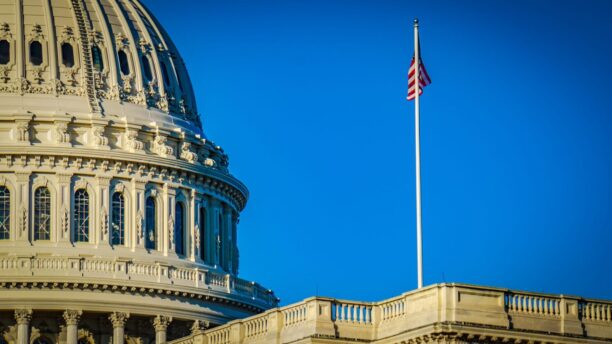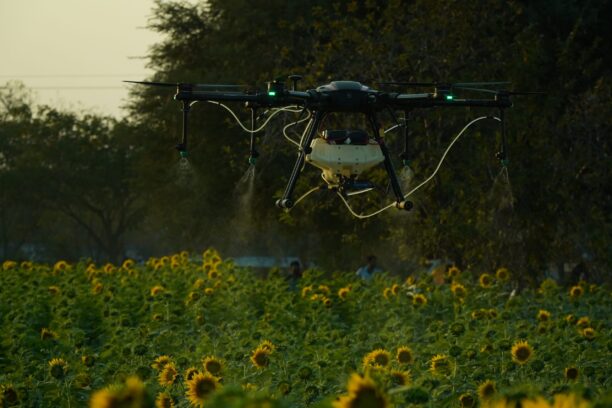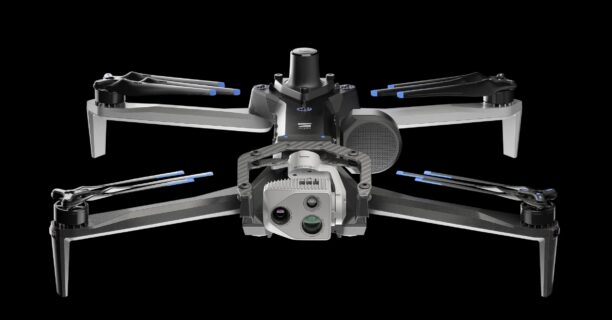
Lawmakers revisit drone safety and counter-UAS insurance policies because the business drone trade pushes for up to date rules.
By DRONELIFE Options Editor Jim Magill
(That is the sixth and closing installment in a sequence of articles, inspecting the issues posed to vital infrastructure websites and different important potential targets of drone incursions by hostile actors. Earlier installments examined present federal legal guidelines pertaining to using counter-drone know-how; the threats from UAVs confronted by jails and prisons, standard and nuclear energy vegetation, sports activities stadiums and airports.
This text will study federal laws proposed within the final session of Congress that didn’t be enacted into regulation, in addition to what sort of drone-related laws might be anticipated within the present session of Congress.)
With the current frenzy over supposed drone sightings, within the U.S. Northeast and elsewhere, federal, state and native officers, regulation enforcement companies and on a regular basis residents have raised questions over how you can defuse potential threats from UAVs operated in an unsafe or malicious method.
A joint assertion issued in December by the Division of Homeland Safety, the FBI, the FAA and the Division of Protection, which sought to allay issues over the sightings, nonetheless indicated the necessity for elevated vigilance, because the authentic use of UAVs continues to increase. The report famous that there are “multiple million drones lawfully registered with the FAA in the US and there are millions of business, hobbyist and regulation enforcement drones lawfully within the sky on any given day.”
Now, even with the “drone scare” or 2024 largely defused, the proliferation of drones within the U.S. airspace is pointing to the necessity for Congress to take the lead in passing new laws to maintain the skies protected for authentic air visitors, each manned and unmanned.
In an interview, Lisa Ellman, govt director of the Business Drone Alliance, stated congressional motion is required to determine new guidelines for the broader use of counter-UAS know-how to assist deter the dangerous use of drones and to facilitate the continued development of the business drone trade.
“Know-how’s moved shortly ahead and the insurance policies have lagged behind. I feel everybody acknowledges that some type of counter-drone laws is overdue that we have to increase the authorities,” she stated.
Ellman, who just lately testified earlier than a congressional subcommittee listening to on counter-UAS know-how, stated any new counter-drone payments handed by Congress ought to comprise a number of parts.
“The primary could be a approach for appropriately educated non-public sector and regulation enforcement entities to make use of superior detection applied sciences,” she stated. “Second, we need to see a sturdy mitigation pilot program that will allow states or localities to make the most of mitigation know-how in sure circumstances.”
A number of payments had been launched within the final session of Congress to increase the authorities of federal companies to guard vital infrastructure websites, and different weak amenities, resembling sports activities arenas, from illegal drone incursions. As well as, laws was proposed to create pilot packages to increase the authority to make use of counter-UAS know-how to state, native, tribal and territorial regulation enforcement companies, in addition to some non-public entities working websites thought of weak to potential drone assaults.
Though not one of the laws was handed within the final session of Congress, the sponsors of many of those payments have vowed to re-introduce them within the present congressional session. As well as, a number of new items of drone-related laws have been launched within the new 119th Congress, which obtained beneath approach January 1.
Payments launched within the final Congress
In what proved to be a uncommon instance of drone-related laws to make it over the end line within the earlier Congress, in December the U.S. Senate handed a last-minute extension of authorization for federal companies to disable drones decided to be a safety menace. The invoice, Counter-UAS Authority Extension Act, was sponsored by Michigan Democratic Senator Gary Peters, chairman of the Homeland Safety and Governmental Affairs Committee. The laws, which was handed on December 20 — the final day earlier than its authorities had been set to run out — prolonged the counter-drone authorities of DHS and the FBI by way of Sept. 30, 2025.
Different proposed UAV-related payments had been stalled or blocked earlier than the tip of the congressional session. Additionally in December, Senator Rand Paul, a Kentucky Republican, blocked a invoice, supported by Senate Democratic management, that will have licensed and supplied sources to state and native authorities to trace the then-unidentified drones flying over New York, New Jersey and different states. Paul stated the bipartisan invoice, sponsored by Peters and supported by Senate Majority Chief Chuck Schumer, would have elevated the federal government’s surveillance powers, probably resulting in violations of residents’ Fourth Modification rights.
In what was maybe essentially the most bold try by Congress to enact laws to increase counter-UAS authorities, Peters additionally launched the Safeguarding the Homeland from the Threats Posed by Unmanned Plane Techniques Act of 2023. Had it handed, the laws would have expanded the authorities that permit DHS and DOJ to disable drones decided to pose a safety threat.
It could have additionally supplied sure state and native regulation enforcement companies with the authority to make use of know-how to assist establish and mitigate pressing drone threats.
Within the Home, H.R. 8610 would have reauthorized and improved oversight of the counter-UAS authorities of DHS and DOJ, and expanded restricted counter-UAS authorities to the FAA. The invoice would even have progressively expanded authorities for counter-UAS detection and mitigation to eligible non-federal entities, together with sure vital infrastructure amenities.
The invoice would have set guidelines for establishing counter-drone operations at sure coated websites, together with: vital infrastructure, resembling vitality manufacturing, transmission, distribution amenities and gear, and railroad amenities; oil refineries and chemical amenities; amusement parks; and state prisons; in addition to places of enormous public gatherings and websites the place flight restrictions are maintained, resembling airports.
As well as, the laws would have licensed “the acquisition, deployment, and operation of an authorized counter-UAS detection system,” by sure state, native, territorial or tribal (SLTT) regulation enforcement companies, in partnership with a coated entity, at a coated website.
An identical invoice, H.R. 4333, launched within the final session by Pennsylvania Democrat Chrissy Houlahan, was the Home model of the Peters’ Senate invoice. The laws would have established a pilot program, initially consisting of 12 SLTT regulation enforcement companies, to coach members of these companies and provides them the instruments wanted to mitigate the menace from hostile drones.
A congressional aide acquainted with the laws, stated the SLTT companies would “have authority to do superior detection, which they haven’t had earlier than, in addition to mitigation, so they’d have the ability to show use of federal government-approved know-how to mitigate drones.” The regulation enforcement companies would have been restricted to using non-kinetic mitigation strategies, resembling utilizing radio indicators, to convey the drones down.
The aide stated Home lawmakers have been engaged on some type of the laws with their counterparts in Senator Peters’ workplace for the previous a number of years and hope to get the invoice re-introduced and handed within the present congressional session. Within the final session of Congress, the invoice attracted sturdy bipartisan assist, with 36 sponsors, 18 Republicans and 18 Democrats.
One other invoice launched within the final session of Congress was H. R. 9949, which might have directed the administrator of the FAA to challenge or revise rules to offer for short-term flight restrictions within the neighborhood of outside music festivals.
Payments launched within the present congressional session
Along with the chance that the above-mentioned payments could be reintroduced, a number of new drone-related payments have been launched within the present congressional session. Final month Representatives Lou Correa, a California Democrat, and Texas Republican Troy Nehls launched the bipartisan Directing Assets for Officers Navigating Emergencies (DRONE) Act of 2025. The DRONE Act would permit regulation enforcement to make use of federal grants to buy and function drones.
Within the Senate, Tom Cotton, Republican of Arkansas and Democrat Jacky Rosen of Nevada in February launched the Disabling Enemy Flight Entry and Neutralizing Suspect Gear (DEFENSE) Act. The invoice would “improve safety at main outside gatherings and sporting occasions by making certain that state and native regulation enforcement have the authority and instruments vital to guard these occasions from aerial threats in real-time, relatively than ready for federal intervention,” in keeping with a press launch.
This invoice has acquired the endorsements a number of main sports activities organizations, together with the NFL, Main League Baseball, NASCAR, the NCAA, and the Southeastern Convention (SEC).
Ellman stated that no matter type of drone-enabling or counter-UAS laws that Congress finally passes ought to defend the rights of authentic drone operators whereas defending the general public from the actions of malicious drone pilots.
“At a excessive degree that we see innovation and safety as two sides of the identical coin,” she stated. “We’re working with the federal authorities on shifting each of those units of guidelines and laws ahead concurrently.”
Need DRONELIFE information delivered to your inbox each weekday? Join right here.
Learn the remainder of the sequence:

 Jim Magill is a Houston-based author with virtually a quarter-century of expertise overlaying technical and financial developments within the oil and fuel trade. After retiring in December 2019 as a senior editor with S&P World Platts, Jim started writing about rising applied sciences, resembling synthetic intelligence, robots and drones, and the methods through which they’re contributing to our society. Along with DroneLife, Jim is a contributor to Forbes.com and his work has appeared within the Houston Chronicle, U.S. Information & World Report, and Unmanned Techniques, a publication of the Affiliation for Unmanned Car Techniques Worldwide.
Jim Magill is a Houston-based author with virtually a quarter-century of expertise overlaying technical and financial developments within the oil and fuel trade. After retiring in December 2019 as a senior editor with S&P World Platts, Jim started writing about rising applied sciences, resembling synthetic intelligence, robots and drones, and the methods through which they’re contributing to our society. Along with DroneLife, Jim is a contributor to Forbes.com and his work has appeared within the Houston Chronicle, U.S. Information & World Report, and Unmanned Techniques, a publication of the Affiliation for Unmanned Car Techniques Worldwide.


Miriam McNabb is the Editor-in-Chief of DRONELIFE and CEO of JobForDrones, an expert drone providers market, and a fascinated observer of the rising drone trade and the regulatory setting for drones. Miriam has penned over 3,000 articles targeted on the business drone area and is a world speaker and acknowledged determine within the trade. Miriam has a level from the College of Chicago and over 20 years of expertise in excessive tech gross sales and advertising for brand new applied sciences.
For drone trade consulting or writing, Electronic mail Miriam.
TWITTER:@spaldingbarker
Subscribe to DroneLife right here.






